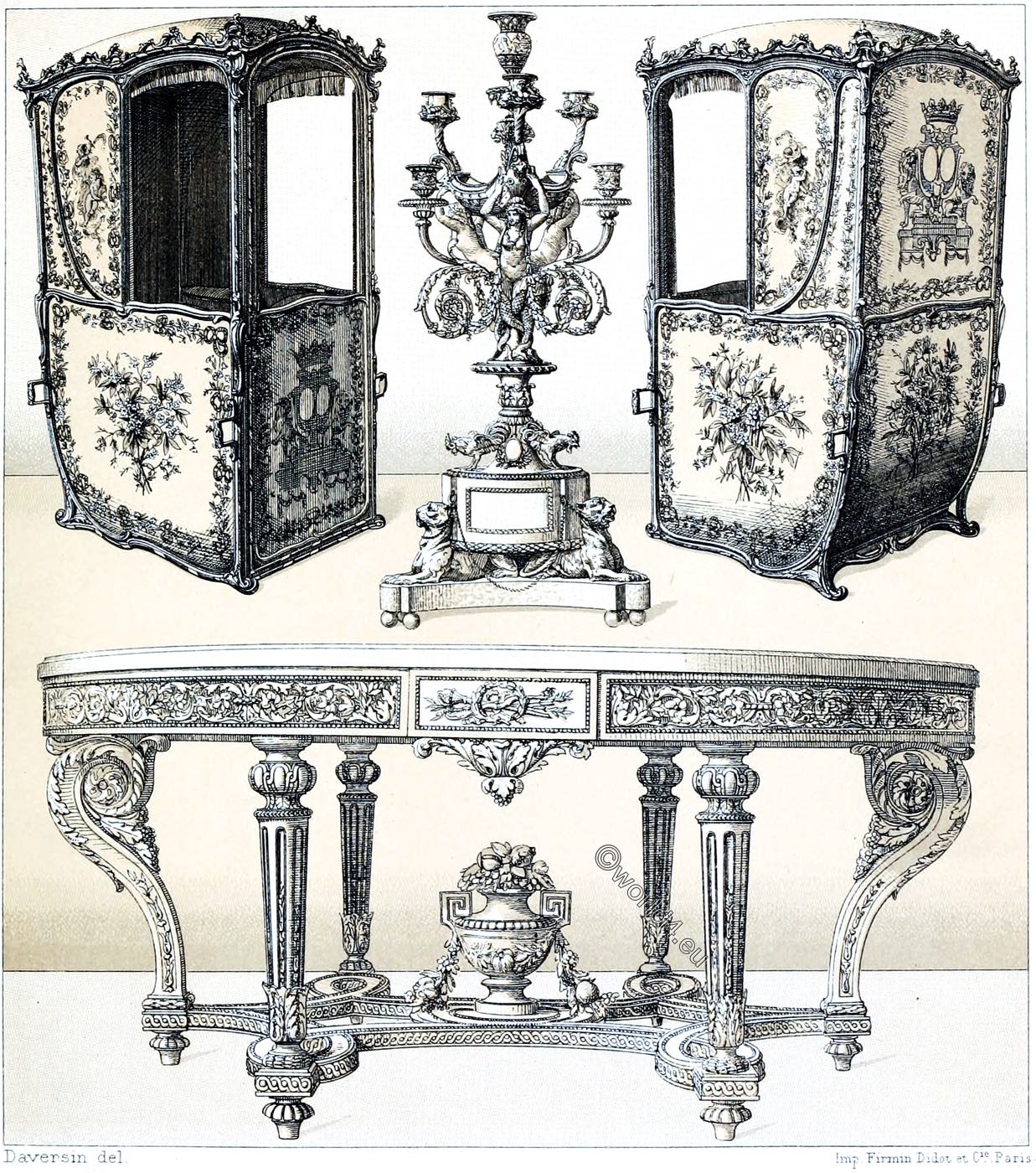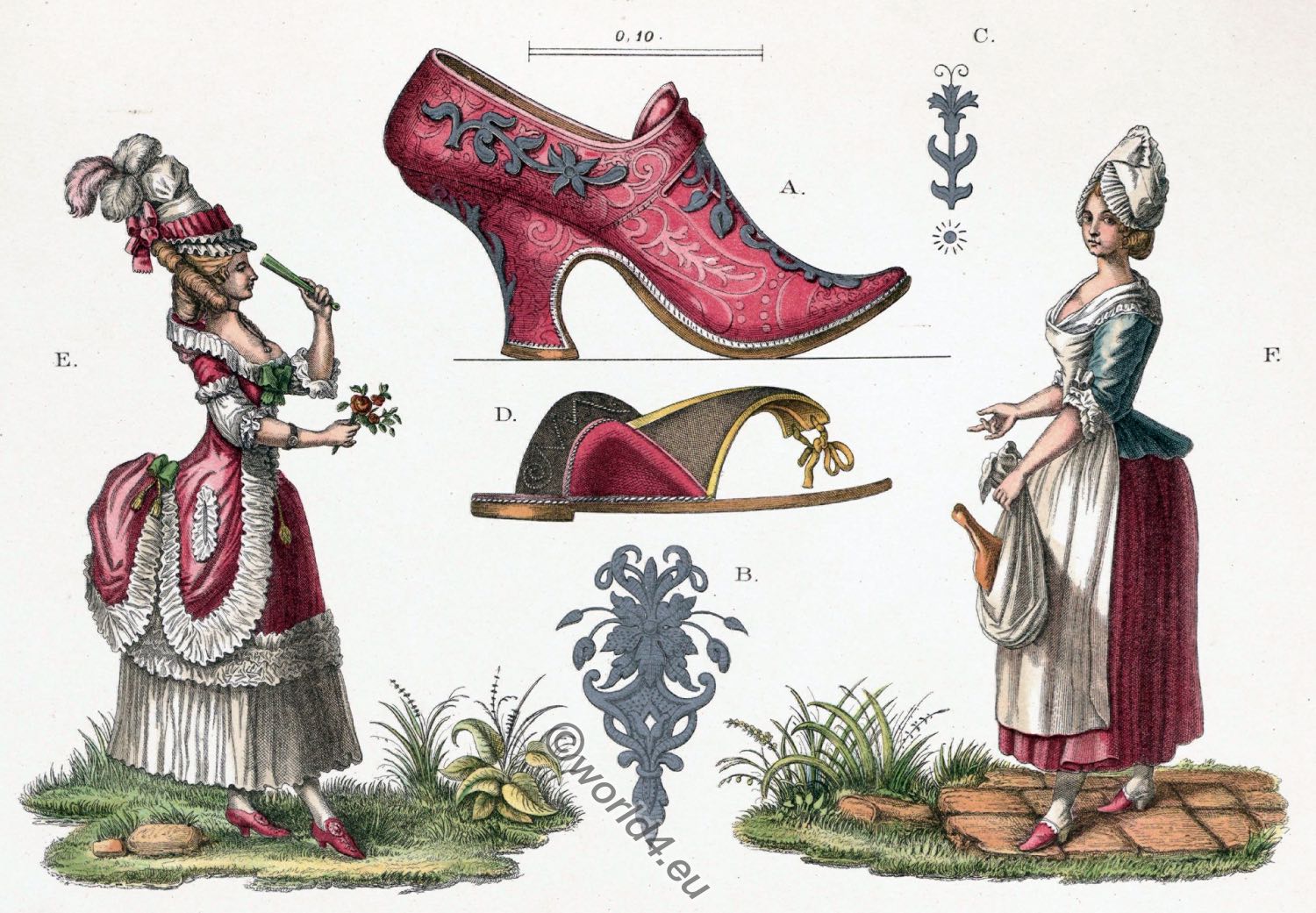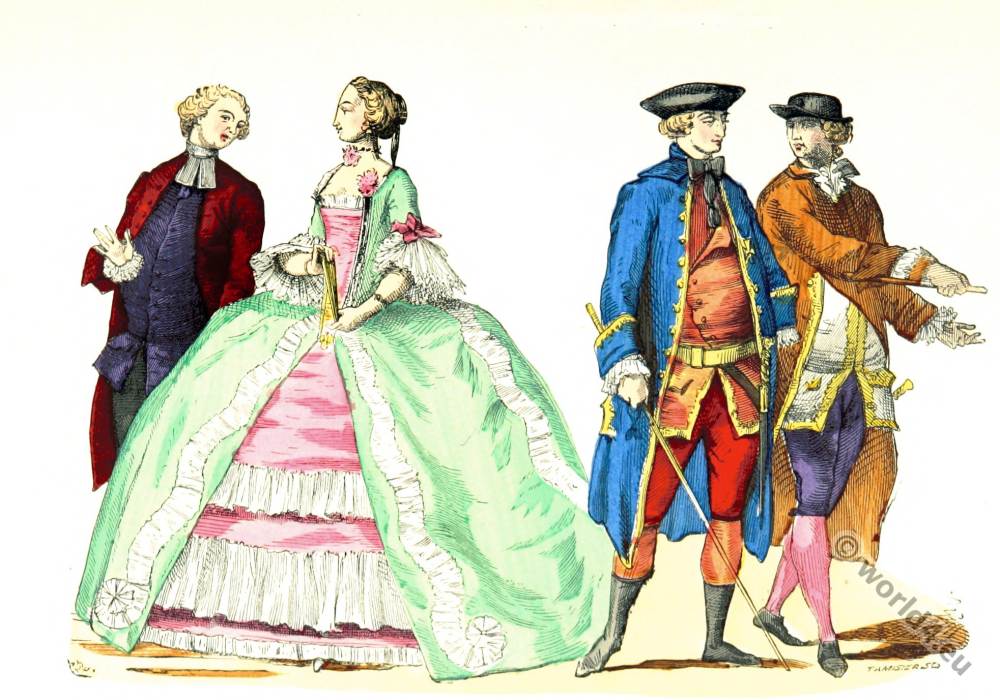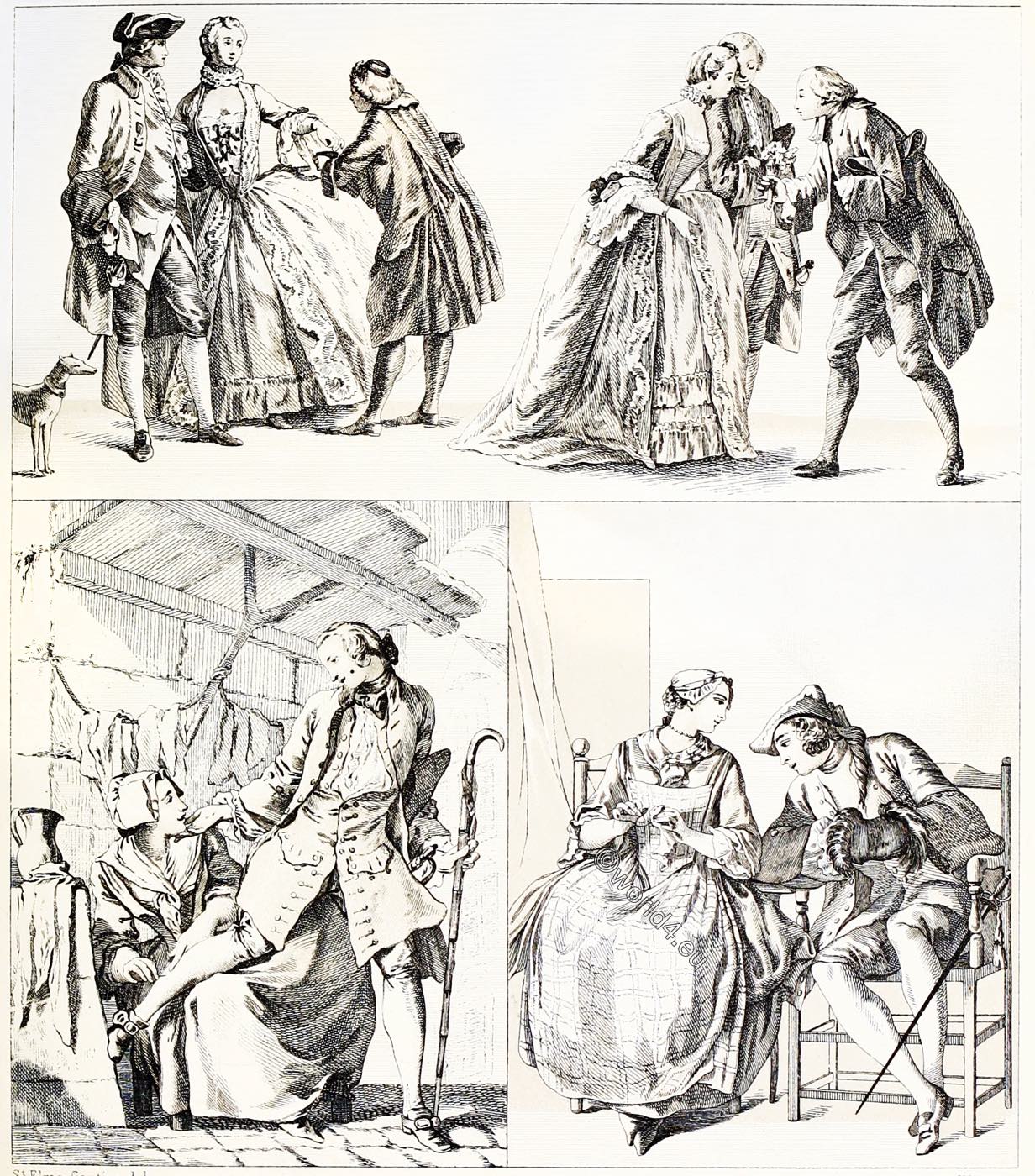FRANCE. XVIII. HUNDRED. FURNITURE FROM THE EPOCH OF LUDWIG XVI.

1, 2,
3,
4,
THE LITTER.
Nos. 1 and 2. Litter from two sides.
Carved and gilded wood, painted with flowers and cupids. The interior decorated with carmoisin red velvet. The fillings, the door and the upper gallery with chased and pierced bronze ornaments. Height 0.63 m, width 0.78 m, depth 0.94 m. The palanquin was owned by Queen Maria Lesczinska and is in the Carriage Museum in Trianon.
No. 3. The Independence Candelabra.
This candelabra was ordered from Thornire in 1785 as a gift for General Lafayette after the recognition of the independence of the United States of North America by the city of Paris. Pedestal with three Sevres plates, on a light blue background depicting the treaty with America, the beginning of hostilities and peace as the victor over war. The leopards point to the defeated English, the cocks to the victory of the French, the sirens to the Ocean, the ship’s beaks to the dedicating city. The rest of the body of the candelabra is made of chased gold bronze. Height 0.62 m, diameter 0.30. Mobilier national.
No. 4. table of gilded wood; ornaments of chased gold bronze.
The frieze on which the marble tablet rests is made of tendrils framed by strings of pearls and interrupted by three panels with attributes of love. Volutes and feet with gilded fluting. In the middle of the crossbars a vase with flowers and garlands. The table belongs to Mobilier national and is located in the Château de Compiègne.
Picture after a photograph.
C.f. the Catalogue du Mobilier national von E. Williamson und de Champeaux (Exposition de l’Union centrale 1882). E. Williamson, Les meubles d’art du Mobilier national, Paris. A. de Champeaux, Le meuble, 2 Bde.
Source: History of the costume in chronological development by Albert Charles Auguste Racinet. Edited by Adolf Rosenberg. Berlin 1888.
Related
Discover more from World4 Costume Culture History
Subscribe to get the latest posts sent to your email.






